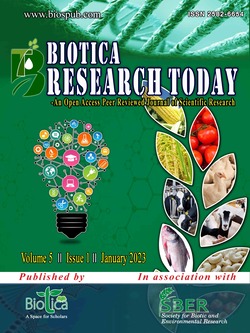
Selective Breeding for Disease Resistance in Aquaculture: Current Methods and Future Directions
Gowrimanohari Rakkannan*
College of Fisheries, Central Agricultural University, Tripura (799 210), India
Himanshu Priyadarshi
College of Fisheries, Central Agricultural University, Tripura (799 210), India
DOI: NIL
Keywords: Disease resistance, Genome editing, Genome selection, Selective breeding
Abstract
Infectious disease is a major constraint for all aquaculture-produced species. The vast majority of farmed fish and shellfish production is based on stocks that have undergone little or no selective breeding. Because disease resistance is universally heritable, there is enormous potential for selecting for improved resistance to key diseases. This article discusses current methods followed for selective breeding in commercially important aquatic animals for disease-resistant species, including species successfully breed and some bottlenecks. Future directions are highlighted, including implementing cost-effective genomic selection for disease resistance trait, to improve genomic prediction in distantly related populations and the potential of genome editing tools for mapping causative variation underlying disease resistance traits.
Downloads
not found
Reference
FAO, 2022. The State of World Fisheries and Aquaculture 2022. SOFIA Publication, Rome. p. 266. DOI: https://doi.org/10.4060/cc0461en.
Bishop, S.C., Woolliams, J.A., 2014. Genomics and disease resistance studies in livestock. Livestock Science 166, 190-198.
Houston, R.D., 2017. Future directions in breeding for disease resistance in aquaculture species. Revista Brasileira de Zootecnia 46, 545-551.
